- Administrator
- Albums and Singles
Originally released on double CD by the amazing Students of Decay in 2008, The Snowbringer Cult is a grandiose quadruple album which combines Mehdi Ameziane’s and Solange Gularte’s solo projects, TwinSisterMoon and Isengrind, on disc one and their collaboration as Natural Snow Buildings on disc two. Ba Da Bing is reissuing the original double CD, along with vinyl versions for each of the three releases, all with interconnecting artwork.
In all, The Snowbringer Cult presents the most varied and nuanced sense of what fills the Natural Snow Buildings cosmos, and is one of the greatest projects by an experimental band in recent years.
Gularte's Isengrind centers on hypnotic soundscapes, floating woodwinds and chanted dirges. The airy sounds intermix and collide, sometimes building ominously, sometimes crashing together. It sounds gloriously like an imagined soundtrack to a banned '70s Italian horror film.
Ameziane's TwinSisterMoon showcases the folk end of his sound. Often graced with his soft countertenor voice, the songs are like a sweet respite amidst the menace of minor keys. Delicate acoustic guitar passages break for shifting drones before leading to ornate instrumentals.
The Natural Snow Buildings material on this double-album brings about an alternately luminous and perilous finish to the journey started by the Isengrind and TwinSisterMoon releases. Here, The Snowbringer Cult reaches climactic points of intensity, following all the tension from the with grand payoffs.
More information here.

Read More
- Administrator
- Albums and Singles
Two of the greatest bands of the present day, each composed of two guitarists and a drummer. Every member's name carries its own legendary status. Richard Bishop. Ben Chasny. Chris Corsano. Michael Morley. Bruce Russell. Robbie Yeats. Fabricated empires have risen and been destroyed by the vast output of any one of these guys. Finally, they come together on one release: a split LP between two supergroups.
The Dead C's tracks are a gem of a find. The band uncovered recordings nestled in the back corner of their archives that they completely forgot existed. These tracks were under consideration for their seminal album Eusa Kills. The loose majesty found on that album comes to the fore here, with a group finding their wings right as they are set aflame.
Rangda recorded their two compositions at Russian Recording in Bloomington, Indiana. Everything that brings these musicians together uncoils and commands. Beats of silence underscore tangents that lead back to main themes and out again. It’s as though the years and years of playing under their collective belts has culminated in these glorious moments.
More information here.

Read More
- Administrator
- Albums and Singles
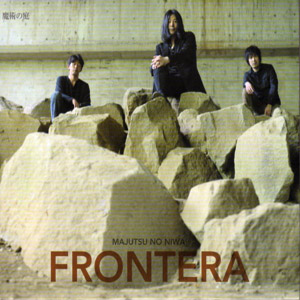
Made up of the members of psych rock group Overhang Party (whose discography has been recently been compiled by Important Records), the trio lead by guitarist/vocalist Rinji Fukuoka captures much of that band’s sound and intensity in these two new albums and deluxe reissue. It also clearly shows the changes and development of their sound, using the past as a reference point but not being mired in it.
Frontera is a reissue of the band’s 2009 album as a lavish, heavy weight double LP that suits the music well, with the gatefold format capturing the classy excess of many a 70s double album.Most of the songs here balance between order and chaos, such as the enjoyably dissonant distortion but rhythmic backing to "Afunruparo" and the hard rock blast and wah laden solos of "Majutsu no Niwa (Magikal Garden)."The distorted, cyclic sound of "Night Cruise" feels like an appropriately respectful nod to Loop, a sound they will return to later.
It would be impossible to simply peg this album as another modern take on space rock though, from the rapid, almost Ramones like surge of "Turn to Flames" and the blues/folk inspired 1960s throwback of "Journey to the End of the Night (Voyage Au Bout de la Nuit)".The final piece, the sprawling 22 minute "La Vena" features artist Sachiko on added electronics, and makes for a gloriously sprawling piece of noise, occasionally flirting with traditional structure but just as quickly turning away from it.
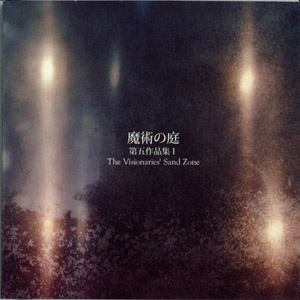
Their newest work is two separate and very different albums that almost sound like two different bands.I must admit to favoring Part I-The Visionaries' Sand Zone the most, with its more abstract feel overall, but heavily based upon a fuzz heavy guitar sound that again channels Loop without sounding like an also ran.
"Desolate Seashore" and "Spring Storms" opt for a majestic sound, working the fuzzed out guitars into a clearly structured and organized dramatic composition.This sound is paired with the likes of "The Call of Thanatos" and "Tick Tack", both of which turn up the tempo and sound a bit looser, almost sloppier, but intentionally so, like some of Boris' best unhinged moments.
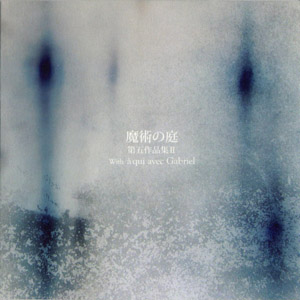
The companion album, Part II:With à qui avec Gabriel, takes a drastic turn into a more folk oriented, stripped down approach that leans more into acoustic guitars and accordion.Compared to their other material, it is far more skeletal and understated.On "Wolf, Scorpion, Earth Fang" and "A Gust of Wind" the sound ends up a bit more complex, with the accordion intertwining strangely, but quite well, with the mildly distorted electric guitar.
"Whither" is the only song that sounds more in league with the Part I album:even though the accordion makes for an odd inclusion, the whole thing comes together as more of an uptempo rock sound."Marseille" also stands out, although here it has a more bluesy lurch in comparison to the rest.
Admittedly, the Part II album does not quite resonate as much with me.I can definitely appreciate it as a well-written and structured album, but the folk type sound has never really been my thing, especially when paired with the more raucous space rock sound they are otherwise known for is so great.When they are more focusing on the loud guitars and rapid rhythms though, it comes together quite brilliantly.
samples:
 
Read More
- Administrator
- Albums and Singles
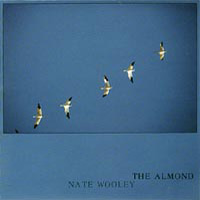 Good luck pinning down New York's Nate Wooley. He's an Oregon-born trumpeter with solo, duo, and quintet projects that deal in free improvisation, extended techniques, feedback, noise, and jazz. He has played with Yoshi Wada, John Zorn, and Anthony Braxton, held residencies at ISSUE Project Room and Cafe OTO; he curates the Database of Recorded American Music online and is editor-in-chief for its quarterly Sound American journal. For The Almond Wooley flies solo, using carefully looped and layered tones to sculpt a beautiful and imposing 72-minute composition for trumpet and voice.
Good luck pinning down New York's Nate Wooley. He's an Oregon-born trumpeter with solo, duo, and quintet projects that deal in free improvisation, extended techniques, feedback, noise, and jazz. He has played with Yoshi Wada, John Zorn, and Anthony Braxton, held residencies at ISSUE Project Room and Cafe OTO; he curates the Database of Recorded American Music online and is editor-in-chief for its quarterly Sound American journal. For The Almond Wooley flies solo, using carefully looped and layered tones to sculpt a beautiful and imposing 72-minute composition for trumpet and voice.
At low volumes or in passing, The Almond might sound like a drone record, and I guess that's accurate to the extent that it is a long, unbroken piece of music composed of sustained tones. But played at louder volumes, as recommended in the liner notes, or given more attention, it sounds less like a drone and more like the audio equivalent of a bas-relief. Each of the looping pitches Wooley uses to build The Almond are made up of several recordings utilizing different tunings, mutes, mics, and environments. By adding and subtracting elements to and from these loops, he transforms apparently smooth and simple tones into layered things with shifting textures, contrasting vibratos, and undulating hues. The bright, relatively smooth grain of his trumpet breaks into grooves, crevices, crests, and furrows, and is joined by other similarly built sounds, which flash and shiver against each other. Nate carefully mixes these, generating harmonies, melodies, textures, and throbbing rhythms in a constant state of flux.
The construction is ingenious and easy to admire, but so are the results. The brassy pitches shimmer beautifully against the finer patterns that cut along its surface. Sections expand and contract as naturally as if they were breathing, but also swell to roiling crescendos. By midway through the record, the very shape of the trumpet comes through in the music: the fleshy buzz of the mouthpiece, the sonorous ring of the bell, even the mechanics of the valves sing. A massive low end, which I cannot identify as a trumpet at all, submerges the brighter sounds in shadow and fills out the thinner places with some muscle. When it drops out, the music is unmoored and floats away lighter than air. It doesn't stop there though. Wooley continues to work and transform his material, shaping it into newer configurations, some of which are quite beautiful. At 72 minutes long, this is still just an excerpt of a longer piece, but I would be happy to follow along for another 72 minutes should Wooley ever think a longer version worth releasing.
samples:
 
Read More
- Administrator
- Albums and Singles
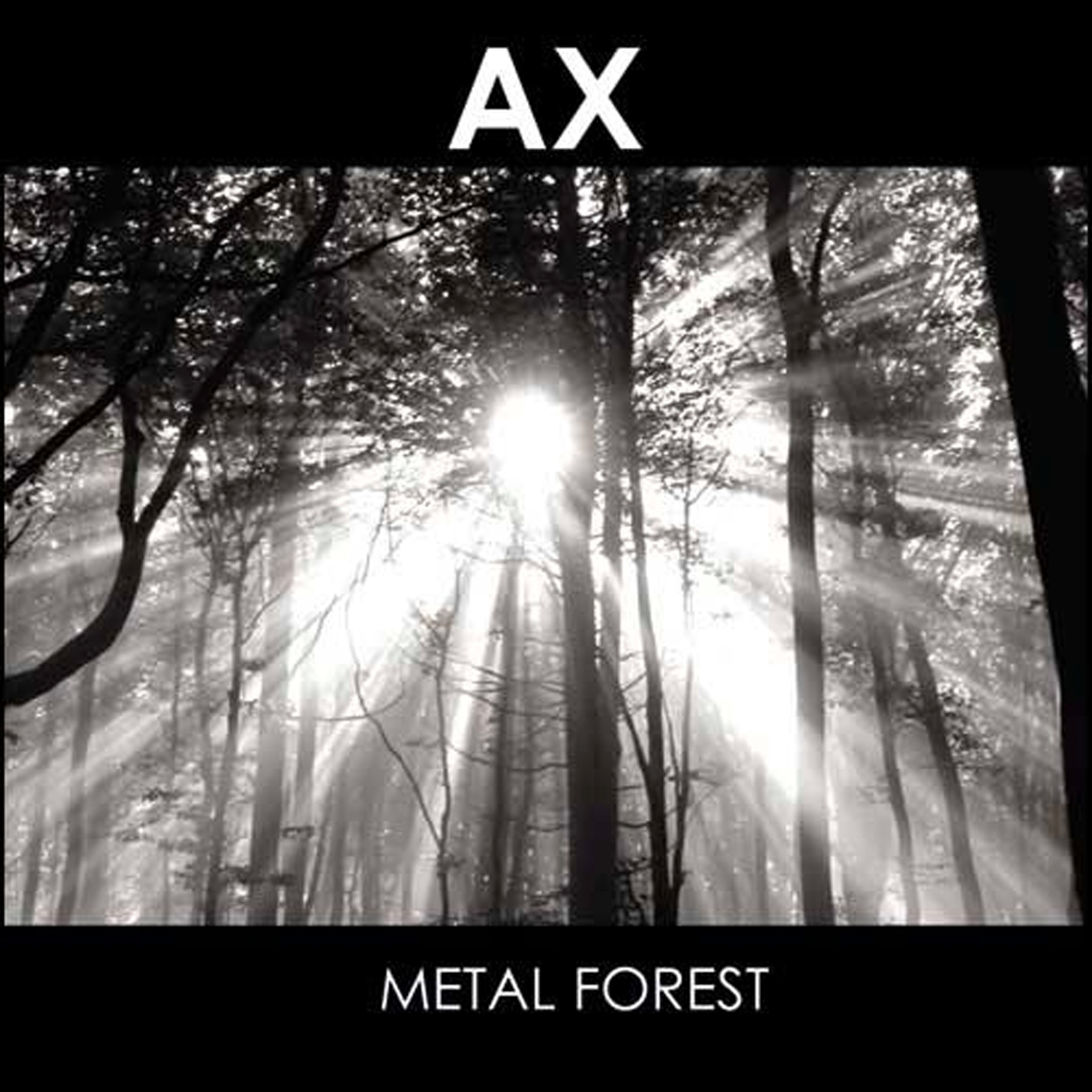 Anthony DiFranco has been a stalwart of the UK noise scene under many guises since back in the Broken Flag days.  In recent years, he has mainly constrained his activities to Ramleh, but he spent the late '80s and early '90s quite actively, recording as Ethnic Acid, JFK, and as an early member of Skullflower.  He also made several gnarled and ugly guitar noise albums as AX, which have long been woefully unavailable.  Metal Forest happily remedies that inequity, cramming all of AX's highlights into one snarling and truly brutal CD.
Anthony DiFranco has been a stalwart of the UK noise scene under many guises since back in the Broken Flag days.  In recent years, he has mainly constrained his activities to Ramleh, but he spent the late '80s and early '90s quite actively, recording as Ethnic Acid, JFK, and as an early member of Skullflower.  He also made several gnarled and ugly guitar noise albums as AX, which have long been woefully unavailable.  Metal Forest happily remedies that inequity, cramming all of AX's highlights into one snarling and truly brutal CD.
This compilation collects nine songs originally released between 1994 and 1997 on the defunct Freek Records label.  Of the three albums cannibalized for Metal Forest (Nova Feedback, Ax II, and Astronomy), only AX's debut LP (Nova Feedback) has been included in its entirety, which is a wise move in many ways.  For one, it seems like DiFranco was particularly inspired early on, covering a lot of stylistic ground and doing so in very visceral fashion–he made quite a definitive statement right out of the gate.  Secondly, the first two AX releases were previously only available on vinyl, so it was much more useful to digitize and disseminate them than AX's later work.  Finally, due to its harsh nature, Metal Forest is already quite exhausting at around an hour–if anything, it could benefit from being less comprehensive.
Given DiFranco's Ramleh/Skullflower pedigree, it is not particularly surprising that AX's strain of noise is often more indebted to rock than electronics, though the line can get quite blurry at times.  What did surprise me is how varied Anthony's attack was within his stylistic constraints: it is not entirely fair to say that noise has become rigidly codified in the years since Nova Feedback's release, but most artists nowadays tend to stake out very narrow terrain for themselves and stay there until they have exhausted every possible variation.  While the six pieces culled from Nova Feedback are primarily built upon bulldozing, heavily distorted bass and dissonant guitar squall, each song is still fairly unique (despite sounding uniformly massive and overdriven).  Also, several pieces sound remarkably ahead of their time, as "Theme One" anticipates the current Harsh Noise Wall genre and "Heavy Fluid" sounds like the missing link between Power Electronics and Sunn o))).
The two pieces taken from 1995's Ax II mini-album are perhaps even better than those from the debut, however.  DiFranco's scope seems to have narrowed dramatically into harsh electronic noise/power electronics territory during that period, but both sections are brutally, grindingly heavy from start to finish (in fact, they probably sound almost exactly like being run over by a tank while trying to saw through it with a chain saw).  Given that intensity, the sole piece from 1997's Astronomy cannot help but be a step in another direction–DiFranco had already taken his inclination towards ugly, violent, roiling chaos as far as it could go.  As a result, "Kortex" is more like crushing, buzzing glacier of heavy that replaces fury with sheer relentless massiveness.  It is quite good in its own right (I loved the undulating sub bass), but it is not nearly as apocalyptic and attention-grabbing as some of AX's earlier triumphs.
The sole flaws with Metal Forest stem primarily from the difficulties inherent in condensing AX's entire discography into one album, as the balance between sequencing and comprehensiveness is quite tricky and required compromise in both regards.  For example, it is perplexing that the third (and final) section of AX II is omitted, given that the two sections that were included probably represent AX's absolute zenith.  Also, 1994's "Cluster" seems a bit contextually out of place, sounding like an extended intro to an early Soundgarden song (they were arguably a cool band then).
Despite that, Cold Spring probably did as fine a job as could be expected, juggling chronology and style to make Metal Forest as listenable as possible.  That still makes for an exhausting and overwhelming dose, I am afraid, but that is entirely due to the sheer force of the material (and there almost nothing included that I would have cut). The bottom line is that Metal Forest is a crucial piece of noise archaeology, as DiFranco made some of the heaviest, most nightmarishly uncompromising music of the '90s and it deserves the wider recognition that this release will hopefully give it.  Consequently, I am more than willing to meet it halfway and intelligently limit my listening for maximum impact.
Samples:
 
Read More
- Administrator
- Albums and Singles
Published to coincide with the release of Wire’s excellent new album Change Becomes Us, Read & Burn is the first serious, in-depth appraisal of one of the most influential British bands to emerge during the punk era.
If Wire were briefly a punk band, however, it was largely by historical accident. Their story is one of constant remaking and remodeling, one that stubbornly resists reduction to a single identity. Read & Burn traces Wire's diverse output from 1977 to the present and does justice to their restlessly inventive body of work by developing a sustained critical account of their shifting approaches. It combines analysis and interpretation with perspective drawn from extensive interviews with past and present members of the group, as well as producers, collaborators, and associates.
Out March 15, 2013 on Jawbone Press.
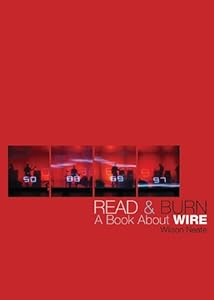
Read More
- Administrator
- Albums and Singles
 Like past releases, the latest from Dan Friel is an overblown, exuberant burst of colorful noise, swelled with circuit bent synthesizers, distorted drums, and major key melodies, celebrating life in a messy display of strength. The sheer caustic timbre of these songs is still the biggest barrier to entry for a lot of people, but now that Parts And Labor has broken up it is more likely than ever than Friel's solo venture will get some serious attention.
Like past releases, the latest from Dan Friel is an overblown, exuberant burst of colorful noise, swelled with circuit bent synthesizers, distorted drums, and major key melodies, celebrating life in a messy display of strength. The sheer caustic timbre of these songs is still the biggest barrier to entry for a lot of people, but now that Parts And Labor has broken up it is more likely than ever than Friel's solo venture will get some serious attention.
Opening with what might be Dan's grandest statement yet, "Ulysses" pretty much sums up Total Folklore in a cathartic blast of noise. Its twelve minute running time cartwheels past on a blown-out hip hop beat stretched and crushed to its limits amidst hyperactive layers of melody. From there, Total Folklore is a singular vision, all victory and hyperbole—songs like "Valedictorian," "Landslide," and "Velocipede" are all congratulatory sonic fireworks, taking the final stage music from a hundred 8-bit video games and putting them through fuzz pedals.
In between full songs, there are "Intermissions" which serve apparently as breathing room between the noise; this is an album intended to be listened all at once, even when its short attention span and self-contained nature suggests otherwise. At 37 minutes, the record plays faster than its impenetrable walls of sound would suggest, but being incredibly catchy makes most noise war electronica easy to swallow. Even without vocals or any real diversity in instrumentation, these songs play on base impulses of rhythm and pop construction, so most of the joy comes from just soaking it all in.
Dan Friel's work in Parts And Labor always seemed a byproduct of the essential balancing act that is having a band. Each member contributes a little bit of their own design to the overall sound, which means no one member dominates the way the songs are heard. Friel's solo work, by comparison, barely holds back at all; it's got all the discipline of a kid after trying caffeine for the first time. Total Folklore is engrossing in its unwavering bliss and cacophony, and it probably wouldn't sound half as distinctive if Dan didn't throw every ounce of energy he possessed into it.
samples:
 
Read More
- Administrator
- Albums and Singles
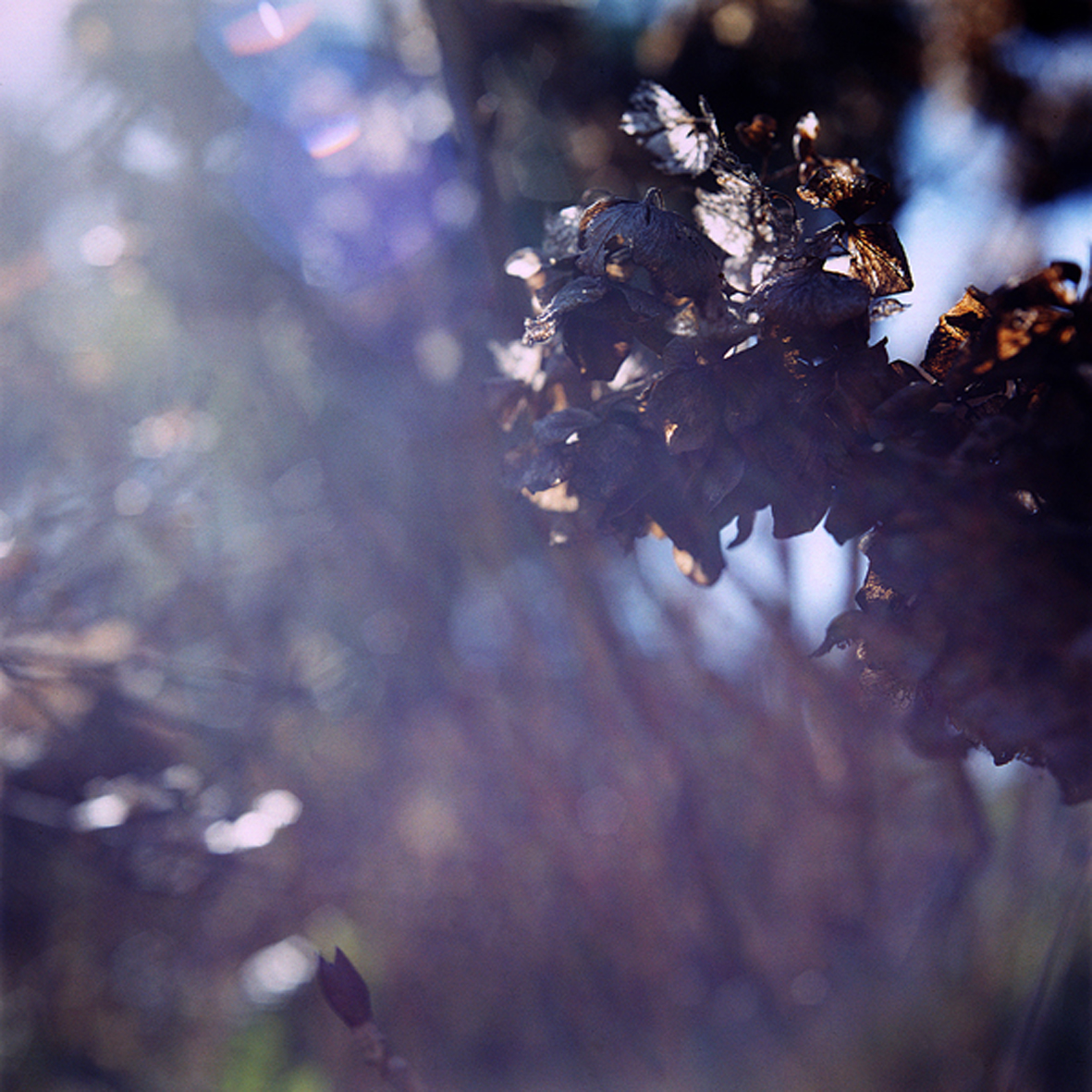 This is Cobb's first full-length under his own name, but he has long been an active and influential figure in the American drone scene as both Taiga Remains and the man behind the Students of Decay label.  Appropriately, the shedding of his artistic alias coincides with a more human, warm, and intimate direction that is not wildly dissimilar to early Taiga recordings like 2006's Ribbons of Dust.  That (somewhat circular) change seems to have suited him quite well, as he and his guitar have delivered a wonderfully languorous suite of gently swaying dronescapes.
This is Cobb's first full-length under his own name, but he has long been an active and influential figure in the American drone scene as both Taiga Remains and the man behind the Students of Decay label.  Appropriately, the shedding of his artistic alias coincides with a more human, warm, and intimate direction that is not wildly dissimilar to early Taiga recordings like 2006's Ribbons of Dust.  That (somewhat circular) change seems to have suited him quite well, as he and his guitar have delivered a wonderfully languorous suite of gently swaying dronescapes.
Passage to Morning is a curious type of album that only a completely confident and established artist could make, as Cobb does not overtly attempt to offer anything particularly "new" or striking.  Instead, these five pieces required me to trust Alex as someone who has a very firm handle on what constitutes great music and allow him the proper time and focus to unearth their subtle beauty.  That is not to say that there are not pieces that stand out, as I immediately loved the queasily dissonant oscillations that ripple through the culminating swells of "The Habit Body."  I was also completely drawn in by the way that the cold and cavernous opening of "Bewildered By Its Blue" gives way to warm and gently crackling drone bliss.  Rather, I mean that the full extent of Cobb's craftsmanship did not become apparent to me until I had heard the album enough to appreciate the flow of the individual pieces within the context of the whole.
The opening "The Immediate Past" is the best illustration of Passage to Morning's initially inscrutable nature, as its glacially unfolding swells of guitar shimmer are transformed into something much more compelling by a ghostly, buried undercurrent.  Rather than continuing to evolve, however, the piece remains relatively static until it eventually fades out.  The closing "Landscape Dissolves" follows a similar trajectory: slowly fading in, sounding great, then fading out.  Initially, I found that to be incredibly exasperating, as it seemed like Cobb created a perfect backdrop for something truly wonderful to occur, then decided that he was content with just the backdrop.  To a certain extent, I still feel that way about some songs, but there is actually a clear evolution displayed over the course of the entire album.  Taken on its own, "The Immediate Past" can seem like something of a prematurely ended missed opportunity, but it feels much more meaningful and substantial when it is allowed to flow into "The Habit Body" (and so on).
My criticisms are rooted in high expectations, however, many of which were either met or exceeded: Cobb has created some truly lush, beautiful drone that favorably reminds me of both recent Windy & Carl and early (pre-orchestral) Stars of the Lid.  Admittedly, nothing on Passage to Morning matches either band at their peak, but Alex has proven that those heights are within his reach.  Cobb's main hurdle is finding a way to make his work more distinctive from that of his peers–a way to humanize his work still further. Alex's talent for burying dissonance and tension within beauty is likely his greatest and most uniquely Cobb-ian trait, but the songs without that balancing act can too easily be mistaken for the work of someone else.  Despite that, Passage to Morning is still an excellent album and an impressive creative evolution for Cobb.  There are definitely strong hints of even greater potential within these songs, but the current offering is very much an absorbing and well-composed effort in its own right.
Samples:
 
Read More
- Administrator
- Albums and Singles
 From its sound to its presentation, this is as much scientific experimentation as it is something to vaguely consider music. The track titles and stark, back cover–that looks more like a lab report than an album cover–are indicative of a work that is heavily focused on conceptualism. For the most part, the experiments work taken out of context as compositions, with a few hang-ups along the way.
From its sound to its presentation, this is as much scientific experimentation as it is something to vaguely consider music. The track titles and stark, back cover–that looks more like a lab report than an album cover–are indicative of a work that is heavily focused on conceptualism. For the most part, the experiments work taken out of context as compositions, with a few hang-ups along the way.
The entire A side of this LP is taken by "Material Study 01 (Sand)," a recording of a buried hydrophone recorded directly to MiniDisc as Pollard stood directly on top of it, shifting his weight occasionally.The result is a textural piece that emphasizes slow scraping and rubbing noises, sometimes sounding more like overly amplified vinyl surface noise, building to an almost rhythmic throb before ending.
The B side begins with "Material Study 02 (Cello and Jacket)," based upon the sound of a contact mic'd cello being dropped to a carpeted floor, then processed via guitar pedals and computer software.In this case, it bears absolutely no resemblance to its source, but instead is shaped into a low-end sustained passage that builds into a higher pitched sound later on.It is overall more consistent and has its own understated rhythm to it.
"Spatialisation Study 01" is four tones played via a home stereo and captured via seven positions in a home, with the results combined into a single eight minute piece.As "Material Study 02," the composition makes for an infinitely stretching, almost ringing sound that is heavy on the low end, with only the most subtle of variations being heard until it spreads and becomes denser.
Based upon the same session, Pollard uses audio clicks from the previous piece on "Spatialsation Study 02," replayed and recaptured via the same room-based setup. They are shaped into a percussive piece that sounds at first like the dying quivers of a drum machine, and then a wall of noise, consisting of all 49 sounds layered atop one another.The final piece, "A Pencil Rubbing for the Album Cover," is self-explanatory:a recording captured via contact mic'd paper.As blunt as its title is, the sound follows suit: a collection of scrapes and muffled noises that sounds exactly like a paper being sketched upon.
With the back cover almost clinically outlining what was used to create these recordings, down to the North Face jacket that appeared in "Material Study 02," the source and inspiration for these recordings is never obscured or hidden.For the most part, the material here could be divorced from those technical details and underlying conceptual ideas and still work as a strong acoustimatic composition.It is only at times, such as on the side-long "Material Study 01" and the final piece where the concept outshines the sound, with the former drifting into formless, repetitive territory, and the latter simply being too straight forward to be compelling.Between these two, however, is a wealth of material that works on both a conceptual and enjoyable level, and overshadows any of the album's shortcomings.
samples:
 
Read More
- Administrator
- Albums and Singles
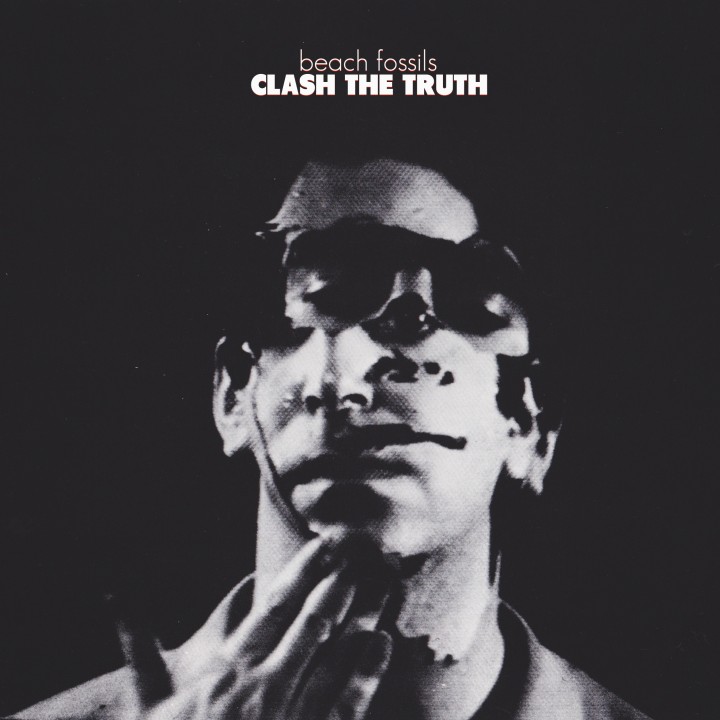 I'm always impressed by groups that can make a collection of distinct songs without changing much in the formula that composes each one. By sparing themselves a lot of the melancholy and slowed choruses inherent to dreamy guitar pop, Beach Fossils has made a sophomore record that feels emotionally charged without ever having to resort to gimmicks or overcompensation on mood or texture. At the core of each song is genuine pop, driven by a real desire to communicate ideas clearly.
I'm always impressed by groups that can make a collection of distinct songs without changing much in the formula that composes each one. By sparing themselves a lot of the melancholy and slowed choruses inherent to dreamy guitar pop, Beach Fossils has made a sophomore record that feels emotionally charged without ever having to resort to gimmicks or overcompensation on mood or texture. At the core of each song is genuine pop, driven by a real desire to communicate ideas clearly.
Clash The Truth is a pop record which succeeds on very modest principles. I'm never averse to a musician throwing a lot of ideas into an album—the more the merrier if it works—but I'm still earnestly respectful of a band that takes their own process to heart and works on improving that and just that. Clash The Truth tries to make the most with a few guitars, a drum set, a handful of delay pedals, and a pleasant voice, following fairly similar templates for each song. Even at its most transparent—probably on "Brighter," the obligatory throwaway ambient interlude—there's a unique voice here that can't be easily replicated.
Usually, I would be worried about this kind of stringent structuring, but it works magnificently in the hands of talented songwriters. Primary member Dustin Payseur knows exactly when to hold back, when to pace himself, and when to drop in a second guitar melody or an offbeat drum fill. There's an edge of post-punk or surf rock or shoegaze present which varies with each piece, but it's distanced just far enough away that I find myself thinking of it as an aftertaste. Instead, I hear that primary sound, nondescript but essential, which speaks confidently on songs like "Careless" and "Shallow" as if it had always been accepted practice to seamlessly blend all these genres.
When Kazu Makino arrives for guest vocals it's perhaps a little too obvious, and songs like "Ascension" play out like a quick attempt to pad the album's somewhat brief 35 minute playing time, but these are minor disappointments. Once the caffeinated surf punk of "Crashed Out" finishes off, all is right again. Beach Fossils have made it clear that they are another group perfectly playing their roles and having fun doing so. Good for them.
samples:
 
Read More
- Administrator
- Albums and Singles
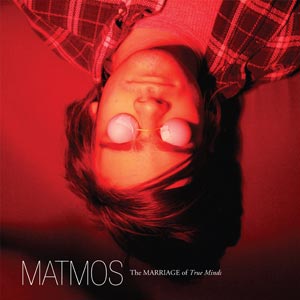 Drawing on parapsychology, pseudoscience and good old fashioned dance music, the latest album from Drew Daniel and M.C. Schmidt is almost unimaginably good. Based around the Ganzfeld experiments in telepathy, in the spirit of The Marriage of True Minds, this review will consist of two parts. One, the regular review by me and the other an experiment by my wife who has not heard the album but has attempted to experience it by concentrating on my thoughts as I listened to the album on headphones.
Drawing on parapsychology, pseudoscience and good old fashioned dance music, the latest album from Drew Daniel and M.C. Schmidt is almost unimaginably good. Based around the Ganzfeld experiments in telepathy, in the spirit of The Marriage of True Minds, this review will consist of two parts. One, the regular review by me and the other an experiment by my wife who has not heard the album but has attempted to experience it by concentrating on my thoughts as I listened to the album on headphones.
Firstly, we present the ganzfeld approach to reviewing The Marriage of True Minds. The target (me) sat in a separate room to the receiver (my wife) and listened to The Marriage of True Minds on headphones. The receiver was allowed to sit on an armchair with her eyes covered. The receiver listened to pink noise through a set of headphones. She were asked to concentrate on the target and describe any mental imagery and mental sounds that they experienced. The receiver’s responses were recorded on a Dictaphone and transcribed below. The receiver was not allowed to listen to The Marriage of True Minds prior to the experiment and the target did not describe the album to the receiver in advance of the experiment (and indeed the receiver was not all that familiar with Matmos anyway!).
"You": There’s something like a light in the very top slightly to the left of my vision. I’m very conscious that it’s there. It feels like something high and bright, like stars and because music’s on my mind I’m thinking of like, I don’t know, like lead in, that it’s delicate somehow or maybe stripped, something like that. In my mind’s eye there’s kind of soundwaves or smoke or fog. Yeah there’s something current about it with little flashes like salmon actually coming out of a river, little flashes of brilliance. A person just a moment ago, like a figure just popped into my mind there. Kind of, a face, definitely a face there. I’m hearing looping like a motif, recurrent motif, like voices maybe. Maybe like a record scratch, actually sounds like "Doo! Na-ha. Doo!" Yeah it’s actually kind of like vinyl yeah, maybe coming to the end of the record or something. Definitely feels like there’s more, there’s a sense of more, more going on. E, the letter E. Hands, maybe hands, fingers? I’m not sure what that was. Face. Again kind of a figure. A woman or a man with long hair. Sense of movement. Backwards. Yeah, I can hear voices, it’s almost, almost constant.
"Very Large Green Triangles": It’s like a chorus going on. But it’s not like someone singing, it’s like someone calling and then this, kind of, vinyl scratch or more like a record coming to the end – actually a weird Mr. Blobby face came there for a second. Dice. Gorilla maybe. Again, yeah faces. They’re coming thick and fast as if the face is drawing in white but just the silhouette in a very stylized, then kind of an Easter Island type head. Something like a little shaft of light, a handle. Window lock. Trees. Feeling a bit self conscious. And a rod support or some little piece of metal. Window. Yeah, architectural details are running through my head. The voice or whatever it was, I’ve just realized that that’s less apparent now, that chorus. Yeah there’s a bit of self-editing going on here, things popping into my head but I can feel my conscious mind rebelling against them or interpreting them. Oh god, very clearly a rat with wings. Literally a rat with wings. Kind of turning into a hamster or a gerbil or something cuter now. Still there, definitely. Cat. They’ve gone. Cat’s there faintly. Seedlings, like watercress.
"Mental Radio": More low… I can’t describe it, the sound has kind of changed, it’s low and forward. No, I can’t put it into the words but the sound feels different. Relaxing. The word "Condor" popped into my head briefly but I’m fighting against saying it because it sounds so stupid. Phoenix or something, something sharp and not quite there. There is a feeling of birds or fish, something moving quickly. Fox. Kind of electricity meeting something, maybe chemistry. Oh and feeling of movement, very definite feeling of moving down and up at the same time, kind of pressing together but not tense. Something like a tunnel or a bubble forming or something. Teeth. There’s a definite sense of movement, this feels faster. Maybe not faster. Progressing definitely. Like it’s going somewhere.
"Ross Transcript": This feels closed in, it doesn’t actually feel good. Kind of creepy imagery coming to me. Skulls. Not human. Other. Needle and thread? I notice over the last few minutes that my proprioception has gone wonky. My head very much feels like it’s in the wrong place, not where I know it to be. There suddenly very busy. It feels a bit fussier now, more bits. I am seeing circles, tunnels, something. Sorry, I’m probably mumbling. It just popped into my head: A tunnel maybe I’m dying. Don’t go into the light!
"Teen Paranormal Romance": Roses, old fashioned tea roses. Honeycomb structure. Complex. Amber, amber orange, yellow. Yeah, definitely honeycomb. Kind of bubbles, bulbous, I’m not sure. Wasps. Proprioception has gone haywire. I feel, it feels really disconcerting. It feels like my legs are up much higher than they are. Like I’m bent over. Now I’m seeing angular shapes like rods kind of piled up on each other. This feels awful, my body feels like it’s totally wrong. White just popped into my head for a second but I can’t put anything around it, just a little white something. Yeah. This feels terrible. Moustache, definitely old fashioned mustache. Kind of M-shapes, like when you draw birds as a child. Those kind of shapes. Cherub briefly there for a second. I shouldn’t have self-censored but briefly there was something like Darth Vadar’s helmet. Now I’m thinking of Death Star. Yeah, sorry, going down a road here. Space is in my mind now definitely.
"Tunnel": Kind of gauzy, gauzy material. Light coming through. Yeah the light kind of coming through a white material, slightly opaque material. Unfolding, there’s a huge sense of unfolding now. The light’s kind of getting bigger in my field of vision. Again, brief concern that I’m dying but kind of OK. Kind of V-shapes going on as if like in a ravine or something. Cloudy now, misty or my vision’s getting greyer. Darkening kind of like there are storm clouds gathering. Feels colder now. My proprioception is mental. There’s a lot less going on now, it feels quieter. That sound is back, the kind of vinyl… bouncing. Ooh I feel, there was a moment there where I felt Alice in Wonderland-y like I was much smaller, like condensed. It feels narrow, that’s the only word. And there’s this kind of surreal element to it. Circus. Toilet briefly popped into my head there. Astronaut. Think white is in there somewhere but I can’t put my finger on the other things. Sense of surfacing. Two women talking to one another. Dressed in their finery. Movement – right to left and left to right like I’m being kind of shook sideways. A little figure, not sure what. A baby. Everything feels a lot louder over the last little while, a lot busier.
"In Search of a Lost Faculty": Seeing sea mines. Coral. Tube coming out of something. Like something small coming out of something bigger. Kind of like grinning skulls like a stylistic face again. A man working on something. Like a forge, you know working intently on something. A person waiting. On a bed. Something growing from something. A lot more organic, a lot more like the human form, more exaggerated. Like elements of nature, very much like animals, just going through small, fine-detailed. Wooden blocks, figures, shapes. Checkerboard pattern. Mount Rushmore, something… carving of a face but very angular. Brown. Hands reaching. Again thinking of kind of small animals maybe.
"Aetheric Vehicle": The Italian flag briefly. Fussy angular fiddly patterns. Actually quite like the outer edge of the sun. I’m definitely getting distracted now by internal sensations. It’s becoming harder to concentrate. Cork in a bottle. Coop from Twin Peaks. Red. And a girl with her hands open wide, a kind of exaggerated "I don’t know" stance. That girl is very much in my mind now. Spinning mechanics maybe. Something like weather apparatus. X. Y. I feel like John’s concentrating very hard now. Maybe forcing himself more, I’m not sure. Unfortunately my inner skeptic is having a little war with myself now. Big and expansive but gappy, very loose. The snow, yeah definitely trees in snow. There’s something incongruous, something I can’t put my finger on. Something not quite adding up or quite right. Really not getting wrong but maybe juxtaposed is more the thing. Night sky. There’s a fuller sound in my ears, the noise seems to have upped a gear. Very conscious I’m probably mumbling. I was thinking very much a rapid pulsing but there is actually a vibration coming through. Either that or I’m really tuning into your thoughts John and you’ve gone for a very bassy sound.
"ESP": There’s definitely a sense of rumbling but can’t put my finger on it. Kind of a top-down feeling, don’t know what that’s about. Thinking of sliding, sliding down. I actually thinks this takes a lot of training, I can’t get past the self-consciousness or the self-editing that’s going on. There’s thoughts briefly coming and slipping away before I can really get a handle on them or decide what they are but I think that’s the conscious mind just imposing itself on this. And here was me thinking I didn’t engage my brain before I talked but apparently no, it really does happen. I’m getting teeth, body parts, eyes, disassembled, kind of, that sounds a bit macabre but no just brief glimpses of individual parts. Mostly an eye. A chain and a lock. An eye there. Really clearly. Like a wolf’s eye. Purple. Figure moving. Silhouetted. There is definitely more like a bass line that’s kicked in, very rhythmic, very centred. Building up speed and then dissipating, gone. There it is, very clearly. Not as clear as before but it came in there again a second but it’s gone. Bathtub was there for a sec. There’s definitely a bass line there coming in every so often. Trendy person there with the black plastic framed glasses. Kind of Salvador Dali rock composition. Bass line's coming back in but it’s gone. Now there’s more, less heavy, a lighter sound. More fine-tuned. Not fine-tuned, finer. I’m really struggling with the sense of time passing. This feels like it should be the 40 minutes. I’m finding it hard to hold myself in concentration. I’m definitely beginning to get I think a little bit anxious about this – Oh! And it’s done!
Matmos have created a stunning work that is as much indebted to methods like free association and as it is to psychic powers. Their employment of unexpected juxtapositions and sense of the other on this album, more than any of their previous releases, is as much a work of psychoanalysis and Surrealism as it is a parapsychological experiment. The ideas may or may not be psychic in origin (personally, I am not even a little bit convinced of it) but the ideas are at the least great and they present a perfect springboard for Matmos to begin from.
"You" (a cover of a Leslie Winer song) sets the scene with a female voice talking about telepathy and the moon, describing everyday activities before another voices asks us "Will you hold that thought?" Musically, some pretty piano provides a platform for sequencers, rubber bands and banjos to take us to another place. The piece also introduces the ubiquitous if unassuming triangle which aside from being one of the most humble of instruments, is a key image throughout The Marriage of True Minds. As if on cue, "Very Large Green Triangles" (also featured on The Ganzfeld EP in a different form) is classic Matmos with its mix of humor, high concept, modern composition and a banging beat. It drives through this plane and into the next, like the very thoughts the duo are trying to project.
I never feared that Matmos would make a dull album based on the subject matter but any danger of that occurring is blown away with each successive piece. "Mental Radio" is a maelstrom of horns and sirens whereas "Ross Transcript" is a concrete poem consisting of manipulated voices, kitchen appliances and abstract synthesizer waves. However, the album’s highlight is undoubtedly the monster piece "Tunnel" where everything that they strive for in melding the paranormal with their music works like magic. A biting guitar, didgeridoo-like sounds, triangles and a pounding beat come together like the sort of concentrated psychic assault that only exists in comics. "There’s a light at the end of the tunnel but it isn’t daylight" – free association or telepathic exchange, "Tunnel" gives me chills.
"In Search of a Lost Faculty" is another highpoint but one of a different caliber. Here the recordings of the participants of Matmos’s experiments are heard in a mostly unadulterated form. All the participants mention chiming, bells or musical triangles (or some variation thereof). As such, Daniel and Schmidt create a haunting soundscape out of struck triangles, bell-like sounds and the ethereal sound of Clodagh Simonds’ voice. Early versions of this have been performed at Matmos live shows since 2008 and it is fantastic to finally have a studio version to go with my memories. Finally, a cover of The Buzzcocks song "ESP" closes the album, which Matmos deconstruct in their own unique way. It is a great rendition of the song that caps off the album in a wry, tongue-in-cheek way. The original already has a fantastic melody but Matmos rework it in such a way as to make it, aptly, bore into the centre of my brain where it has stayed for weeks now.
So while I am less than convinced of telepathy (the vaguely random, read-what-you-like-into-it transcript of our ganzfeld experiment was fun but more wrong than right), I am totally convinced of The Marriage of True Minds. Matmos have taken their time in developing this album but it has been time well spent as this is easily up with their best work like A Chance to Cut is a Chance to Cure or The Rose Has Teeth in the Mouth of the Beast.
 
Read More

